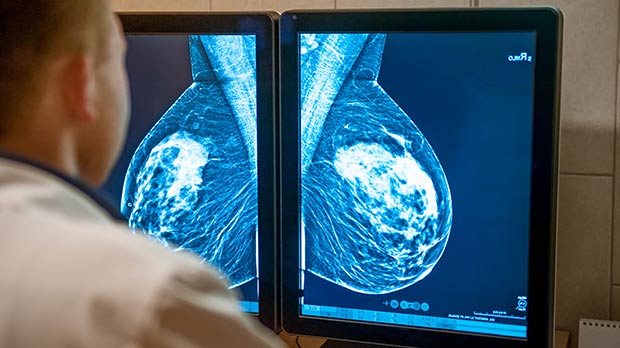Canada’s leading experts on breast cancer say you should know:
How is breast cancer detected?
In Canada, mammography is the frequently used test to find breast cancer. There are two types of mammography, according to the Canadian Cancer Society:
- Screening mammography is used to look for cancer in those without any breast cancer symptoms.
- Diagnostic mammography is used to diagnose a breast problem, like a lump.
“Screening mammograms are the best method for detecting breast cancer early and can usually find lumps before women or their doctors can feel them,” said Dr. Rose Zacharias, a family physician with a hospital-based practice and president of OMA during a recent news conference.
What are the risk factors for breast cancer?
A number of factors contribute to your risk. Some are factoring those women can control, and others they can’t, said Gordon. A family history, genetic mutations, previous chest radiation and atypical cells on a breast biopsy are all risk factors that cannot be controlled and put those women at a higher risk.
Black, Asian and Hispanic women are also at a higher risk of getting breast cancer earlier in life, Gordon added. “Their incidence peaks in the mid-40s, whereas [for] white women it peaks in the late 50s and 60s,” she said.
- Mom’s late cancer diagnosis highlights health-care challenges Black women face, expert says
A woman’s breast density is a risk factor, Gordon said. She said that a breast is made up of fat and normal breast tissue composed of glands, fibrous tissues and more.
“Cancers look white on a mammogram. So does normal breast tissue. So, if a woman has a large proportion of normal dense tissue in her breast … we know there’s an increased risk that we won’t see it on a mammogram and it’s hidden in the dense breast tissue,” said Gordon.
She said the only way to know your breast density category is through a mammogram. Health authorities in six provinces tell all women their breast density category on mammogram results.
“All women should know their breast density, just like all people should know their blood pressure or their cholesterol level,” Gordon said.
- Her dense breast tissue hid cancer for years. Now she’s warning others
- Dense breast awareness has skyrocketed in the past year, says advocate
Although rare, men are also at risk of breast cancer, making up less than one per cent of all cases in the country, according to Canadian Cancer Society.
Eating a healthy diet and reducing or eliminating alcohol and smoking can help decrease someone’s risk, said Dr. Jean Seely, a radiologist and a professor in the University of Ottawa’s radiology department, who also spoke at the OMA’s recent webinar.
Gordon said living an active, physical life and maintaining a healthy weight can also help.
When should women start getting routine mammograms?

There are several factors that determine when women start routine mammograms.
“The gold standard would be for all women to have annual mammograms starting at 40,” said Gordon.
- Canada’s guidelines say most women in their 40s don’t need a mammogram. This breast cancer survivor disagrees
But depending on where you live in Canada, you may not be able to get a mammogram in your 40s.
Only P.E.I, Yukon and Nova Scotia allow women to self-refer for mammograms annually starting at 40. In Alberta, a requisition from a doctor is required for the first screen, and then self-referral is allowed.
The remaining provinces and territories have varying guidance, with some based on the Canadian Task Force on Preventive Health Care’s recommendations for women in their 40s.
- Medical experts disagree on benefits of early breast cancer screening versus harms of over-diagnosis
- Breast cancer screening guidelines based on flawed Canadian study; new paper says
Gordon said it’s important for this age group to be routinely screened because about 17 per cent of breast cancers occur in women in their 40s.
That’s significant because “when women do get breast cancer before they go through menopause, those cancers grow faster than in older women,” she said.
And if women don’t have routine access to screening, Gordon said “those cancers are being detected later and those women are going to need more aggressive therapy, going to need a mastectomy… more likely to need chemo and so on. So even if they survive, their quality of life going through breast cancer is not as good as if they find it earlier.”
Source: CBC


